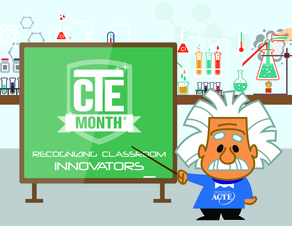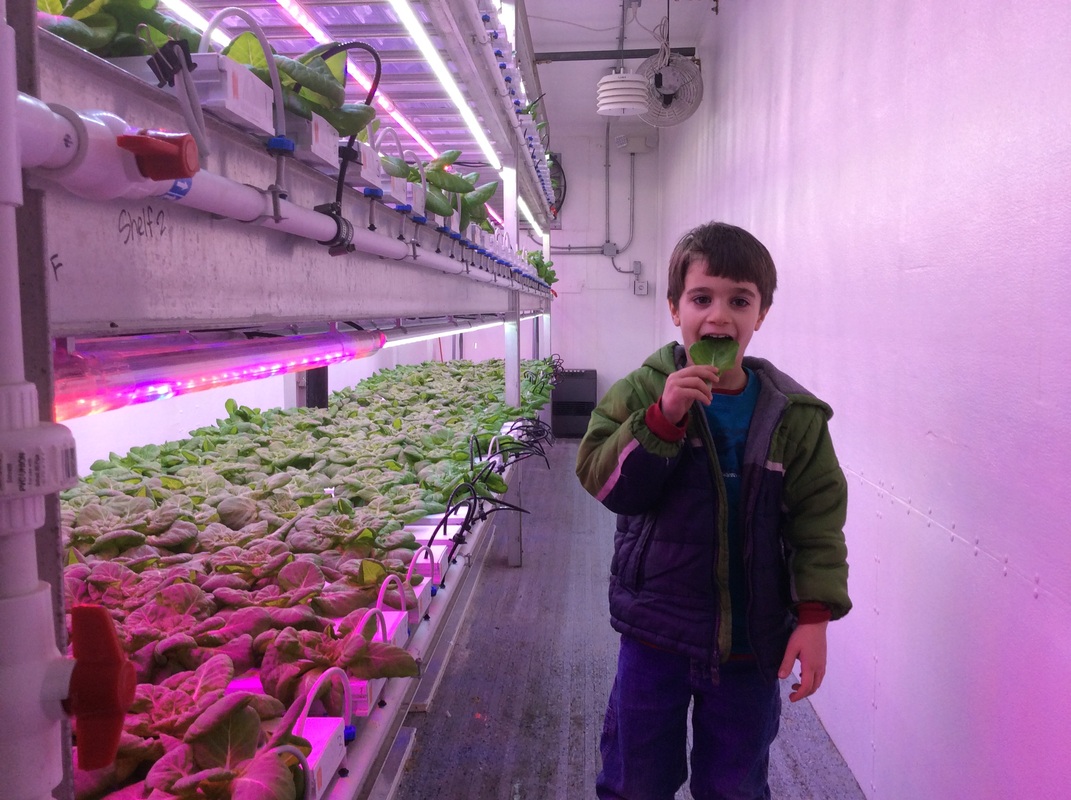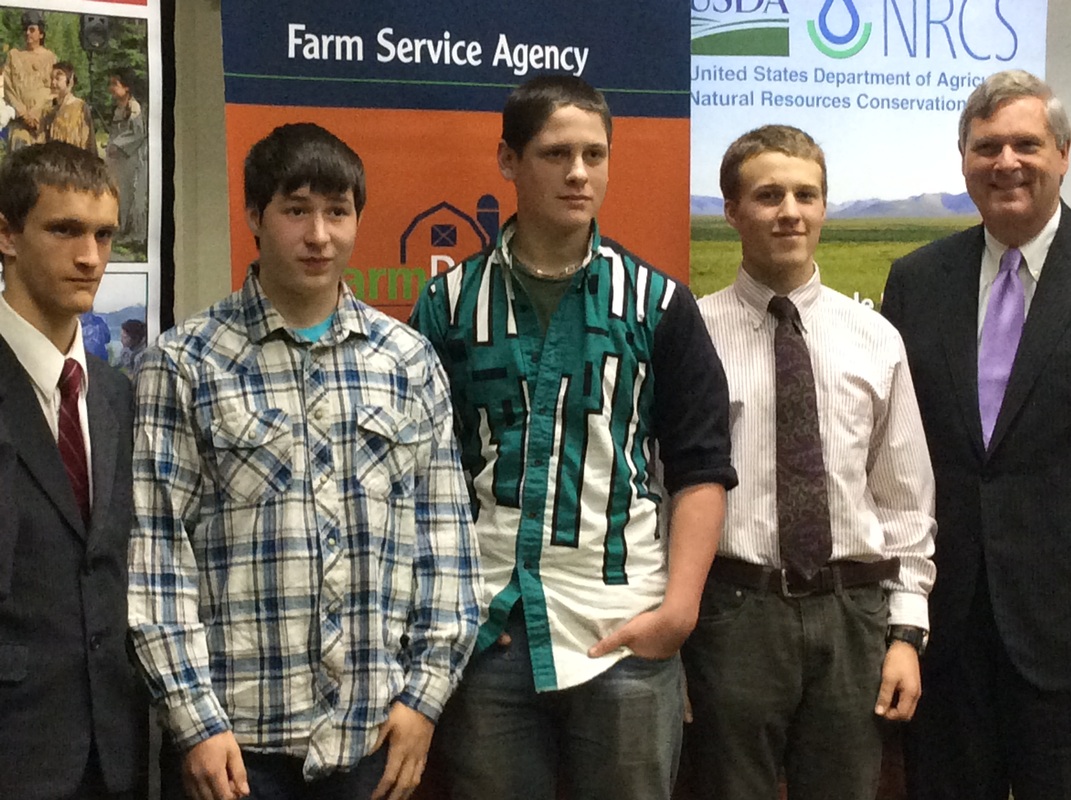sEND uS your sUCCESS sTORY!
Is there a CTE program, student, teacher or instructor, administrator, or supporter you want us to highlight? Please download and complete the form below - or ask the appropriate person to do that, then email it to [email protected], and we'll add it to this Celebrate Success page!
Celebrating CTE Success - Share Your Story Information Form (fillable PDF)
Celebrating CTE Success - Share Your Story Information Form (fillable PDF)
Millwright – UAA Prince William Sound CollegE
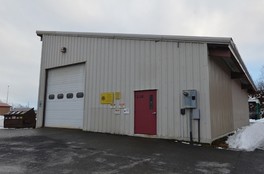
Alaska's TVEP funding paid for a millwright instructor and equipment to suppor the Millwright program.
Supporting Alaska’s Workforce
The Millwright program at Prince William Sound College (PWSC) trains workers in the maintenance of machinery for critical components of Alaska's industrial base such as oil, gas and mining development and power generation. The program offers students the opportunity to test for industry recognized credentials through the National Center for Construction Education and Research (NCCER) and nearly 100% are obtaining their credentials. Job placement or promotion is very high with many graduates working for local employers such as Petro Star, TCC, Crowley, the City of Valdez and Alyeska Pipeline, along with employers around the state. Dennis Eastman, Assistant Professor of Millwright at UAA PWSC spoke of the value of this program: “Thanks to our many contributing sponsors we have been very successful in placing our students in companies around Alaska. BP, Alyeska, Conoco Phillips, Ludeca, Turn Technology, Alaska Bearing, Roteq and Pogo have all been generous with donations of equipment and funding. One-hundred percent of students who actively sought work after the completion of the program were employed in their chosen field and have been able to earn higher wages than their contemporaries who did not complete a comparable program.”
Nondestructive Testing - UAA Community and Technical College
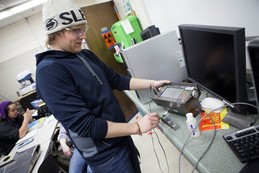
Alaska's TVEP funding paid for one full-time faculty position in support of this program.
Supporting Alaska’s Workforce
The UAA Nondestructive Testing program serves Alaska by providing the only instructional course for entry-level nondestructive testing within the state. This profession is vital for the oil and gas industry and provides Alaska with entry-level personnel to fill the employment demands of this growing occupation. The Community and Technical College at UAA is creating a program of distinction, providing hands-on applications with the latest technological advances found in this occupation. Graduates from this program can be employed in a wide range of industries from manufacturing, construction, energy, oil and gas, maritime and mining.
According to Brett McBryde, Training and Certification Coordinator with Kakivik Asset Management,"When considering career options, most students are completely unaware that nondestructive testing is a very exciting and rewarding career field. Nondestructive testing plays a big role in keeping our world safe and is used extensively in Alaska to monitor critical infrastructure in many different industries. Kakivik is pleased to be associated with the University of Alaska Anchorage to help develop a highly trained nondestructive testing workforce for Alaska."
Supporting Alaska’s Workforce
The UAA Nondestructive Testing program serves Alaska by providing the only instructional course for entry-level nondestructive testing within the state. This profession is vital for the oil and gas industry and provides Alaska with entry-level personnel to fill the employment demands of this growing occupation. The Community and Technical College at UAA is creating a program of distinction, providing hands-on applications with the latest technological advances found in this occupation. Graduates from this program can be employed in a wide range of industries from manufacturing, construction, energy, oil and gas, maritime and mining.
According to Brett McBryde, Training and Certification Coordinator with Kakivik Asset Management,"When considering career options, most students are completely unaware that nondestructive testing is a very exciting and rewarding career field. Nondestructive testing plays a big role in keeping our world safe and is used extensively in Alaska to monitor critical infrastructure in many different industries. Kakivik is pleased to be associated with the University of Alaska Anchorage to help develop a highly trained nondestructive testing workforce for Alaska."
Physical Therapy Assistant (PTA) – UAA College of Health

In 2013-2015, funding from Alaska's Technical and Vocational Education Program supported one full-time faculty position and supplies for the PTA program.
Supporting Alaska’s Workforce
Prior to the creation of the UAA PTA program, Alaska was the only state in the country that did not offer a program in physical therapy, and was ranked 49th/50th in number of PTAs per capita. As a result of there being no program in Alaska, individuals interested in becoming physical therapist assistants were required to leave the state to complete their education/training, and often stayed after completion of the program instead of return to Alaska. This program allows 12 new PTAs a year to enter Alaska's workforce, which for 2016 will represent a 12% increase in the number of licensed PTAs in the state. The program recently received full accreditation through 2020.
According to LeeAnne Carrothers, PT, PhD, UAA PTA Program Director, “This program provides a first of its kind opportunity for students interested in physical therapy to earn their degree in Alaska. TVEP funding has given us the opportunity to create a state of the art laboratory/classroom in which PTA students can learn.” Barbara Yeagley, who graduated from the program in 2015, believes that "the PTA program will impact all of greater Alaska by providing skilled therapy and a professional outlook of health care in local and rural communities."
Supporting Alaska’s Workforce
Prior to the creation of the UAA PTA program, Alaska was the only state in the country that did not offer a program in physical therapy, and was ranked 49th/50th in number of PTAs per capita. As a result of there being no program in Alaska, individuals interested in becoming physical therapist assistants were required to leave the state to complete their education/training, and often stayed after completion of the program instead of return to Alaska. This program allows 12 new PTAs a year to enter Alaska's workforce, which for 2016 will represent a 12% increase in the number of licensed PTAs in the state. The program recently received full accreditation through 2020.
According to LeeAnne Carrothers, PT, PhD, UAA PTA Program Director, “This program provides a first of its kind opportunity for students interested in physical therapy to earn their degree in Alaska. TVEP funding has given us the opportunity to create a state of the art laboratory/classroom in which PTA students can learn.” Barbara Yeagley, who graduated from the program in 2015, believes that "the PTA program will impact all of greater Alaska by providing skilled therapy and a professional outlook of health care in local and rural communities."
Seafaring Success: TVEP Maritime Trades at UAA Kodiak
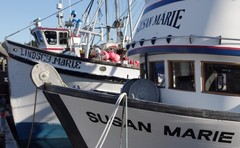
UAA Kodiak College has used TVEP funds to purchase tools, equipment and shop space for training locals in the Maritime Trades. Examples include:
- Propulsion and fuel skid/teaching aid: This training skid demonstrates all the components, interaction, alignment and maintenance of major vessel systems. The components are real working parts that can be operated, maintained, disassembled and reassembled by students for practice. It trains students, including owners of commercial fishing vessels, who are planning to join the fleet and boat owners.
- DC Electrical training stations and supplies: This equipment allows students to wire their own DC circuits with a variety of common vessel components in a safe classroom setting using proper equipment, tools and procedures.
- Advanced electrical tools and supplies: These supplies allow students to see the bigger system of total vessel electrical. With Kodiak College’s membership in the Marine League Schools this enables them to offer the industry recognized Marine Technician Certifications of The American Boat and Yacht Council (ABYC).
- Mobile shop for fiberglass/wood: This 8x20 mobile space is separate from other buildings and is dedicated to the use of teaching simple fiberglass/wood composite construction and repair, requested by the community.
- Marine Electrical Certification and Marine Corrosion Certification: Attended by marine service professionals, fishing and recreational vessel owners, harbor staff and fishing crew.
- Vessel Systems Overview: Attended by fishing vessel and recreational vessel owners, fishing permit holders, those wanting to join the fishing fleet, individuals who have worked aboard as contractors (not crew) and boat brokers.
- Deck Hand Basics: Attended by those considering work as fishing crew and/or becoming a catch vessel owner.
- Introduction to DC Electrical: Attended by vessel owners, those wanting to become fishing crew and individuals needing the basics of DC for other aspects of life.
Growing Alaska's Teachers: TVEP Funding for FEA Provides Support & Advocacy
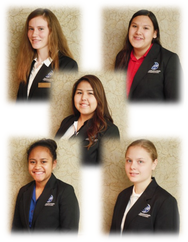
UA's TVEP funds support Future Educators of Alaska (FEA)'s goal of attracting students in rural Alaska to the teaching profession with the intent of growing Alaskan educators. Each club receives a starter kit of materials, advisor/coordinator stipends and money for supplies to engage students in a variety of activities addressing culture, technology, career awareness, curriculum, service and community throughout the year.
From the local clubs, between sixty-five and seventy-five student members attend events such as FEA Academy, Career and Technology Student Organizations (CTSO) and CTSO officer training each year. Students are able to interact with their peers at leadership workshops and learn college and career readiness by participating in resume building and interviewing workshops. Students attending the FEA Academy tour a University of Alaska campus and have the opportunity to take the accuplacer college placement test to determine academic preparedness for college.
TVEP funding allowed high school students to enroll in dual credit education courses where students become familiar with learning and teaching styles, teacher effectiveness and professionalism. Upon successful completion students earn 1 credit toward high school graduation and 3 college credits that can be applied toward an education degree. Offered for the first time in FY15, with the successful completion of both education courses and a passing PRAXIS score, students can be certified as a paraprofessional teacher aide.
Many of the teachers Alaska hired to teach in Alaska’s rural schools are from outside of Alaska, are new to the teaching profession and are unprepared for the cultural differences they encounter while living in a rural Alaska Native village. The result is teacher turnover in Alaska’s rural districts. Policy makers, district and university leaders, and Alaska Native community members are a chorus of voices emphasizing the need to “grow our own” teachers to educate Alaska students. FEA is the vehicle through which this is being done.
“I've taught Alaska Native students for over 15 years," said Michael Stacks, UAA FEA course instructor, "and no other program I've been involved in has had a greater impact on education than FEA." According to student Mercy Correa Flores,
"FEA has given me the opportunity to recognize how significant teachers take part in our lives and has inspired me to become a teacher in the future."
For more information on Alaska's FEA and how to get involved, visit http://www.futureeducatorsalaska.org/.
From the local clubs, between sixty-five and seventy-five student members attend events such as FEA Academy, Career and Technology Student Organizations (CTSO) and CTSO officer training each year. Students are able to interact with their peers at leadership workshops and learn college and career readiness by participating in resume building and interviewing workshops. Students attending the FEA Academy tour a University of Alaska campus and have the opportunity to take the accuplacer college placement test to determine academic preparedness for college.
TVEP funding allowed high school students to enroll in dual credit education courses where students become familiar with learning and teaching styles, teacher effectiveness and professionalism. Upon successful completion students earn 1 credit toward high school graduation and 3 college credits that can be applied toward an education degree. Offered for the first time in FY15, with the successful completion of both education courses and a passing PRAXIS score, students can be certified as a paraprofessional teacher aide.
Many of the teachers Alaska hired to teach in Alaska’s rural schools are from outside of Alaska, are new to the teaching profession and are unprepared for the cultural differences they encounter while living in a rural Alaska Native village. The result is teacher turnover in Alaska’s rural districts. Policy makers, district and university leaders, and Alaska Native community members are a chorus of voices emphasizing the need to “grow our own” teachers to educate Alaska students. FEA is the vehicle through which this is being done.
“I've taught Alaska Native students for over 15 years," said Michael Stacks, UAA FEA course instructor, "and no other program I've been involved in has had a greater impact on education than FEA." According to student Mercy Correa Flores,
"FEA has given me the opportunity to recognize how significant teachers take part in our lives and has inspired me to become a teacher in the future."
For more information on Alaska's FEA and how to get involved, visit http://www.futureeducatorsalaska.org/.
TVEP Success: UA Mining and Petroleum Training Services (MAPTS) Hard Skills Mine Training Camps
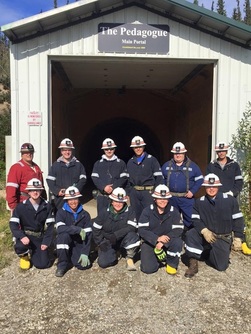
The mining sector is one of the fastest growing industries in Alaska. When University of Alaska's Mining and Petroleum Training Service (MAPTS) program began in 2013 with funding from the Alaska Technical Vocational Education Program (TVEP), Alaskan mines experienced an average of 18% annual employee turnover, or about 324 positions annually. Several prospective mine projects in the future could add as many as 3,000 jobs to the shortage of trained workers.
Many mining projects are located within employment-depressed areas that often contain higher than average unemployment, combined with elevated poverty rates and minority populations. Too often, employment opportunities are missed by these groups due to lack of experience, education and access to funding. The mining industry often finds that on-the-job training can become overwhelming when trainees lack even the most basic skills. Alaska also has many unemployed or underemployed veterans attempting to secure long-term employment in the mining sector, which is known for long-term, high-paying jobs with above average benefits. The median annual wage for Alaska-based miners is $89,000 with benefit packages ranging from 35% to 48%.
MAPTS and the University of Alaska Underground and Surface Mine Training Programs focus on both hard skills and employability skills needed to create a stable and sustainable workforce. The 280-hour underground program is designed and delivered in partnership with industry employers. The program provides a camp in which students get the simulation of working in a real mining environment. The experience gives students in-the-seat equipment operating experience, general mining task experience, regulatory and compliance classroom and field experience combined with the built-in employability skills training. The surface program is designed with industry input and with the donation of an actual surface haul truck for training.
Employers recruit, interview, pre-screen and select qualified candidates for training. Employment offers are issued contingent on the successful completion of training. The program's target is to employ 80% of successful students in the first 30 days of class completion and the remaining 20% within six months. MAPTS has seen great success with 86% post-training employment of Alaskans, and has also been credited with the new zero turnover rate in the entry-level positions at a major underground producing mine in Alaska. The only losses have been employees who have moved out of the backfill unit into production areas - in essence, a progression upward. This has left openings for more newly trained employees. MAPTS is meeting the goal of putting Alaskans to work in their local regions and preparing them to be long-term, sustainable employees.
George Willis, a MAPTS student, had this to say: "Thank you for the opportunity to learn something new. I almost didn't go…I thought I wasn't going to make it, but after (seeing) that “never give up” poster in the class room, I kept on going and I'm glad I went. I'm going to start working in about two weeks and I can’t wait."
For more information on TVEP at UA Statewide, contact Associate Vice President of Workforce Programs Fred Villa at (907) 450-8008 or [email protected].
Many mining projects are located within employment-depressed areas that often contain higher than average unemployment, combined with elevated poverty rates and minority populations. Too often, employment opportunities are missed by these groups due to lack of experience, education and access to funding. The mining industry often finds that on-the-job training can become overwhelming when trainees lack even the most basic skills. Alaska also has many unemployed or underemployed veterans attempting to secure long-term employment in the mining sector, which is known for long-term, high-paying jobs with above average benefits. The median annual wage for Alaska-based miners is $89,000 with benefit packages ranging from 35% to 48%.
MAPTS and the University of Alaska Underground and Surface Mine Training Programs focus on both hard skills and employability skills needed to create a stable and sustainable workforce. The 280-hour underground program is designed and delivered in partnership with industry employers. The program provides a camp in which students get the simulation of working in a real mining environment. The experience gives students in-the-seat equipment operating experience, general mining task experience, regulatory and compliance classroom and field experience combined with the built-in employability skills training. The surface program is designed with industry input and with the donation of an actual surface haul truck for training.
Employers recruit, interview, pre-screen and select qualified candidates for training. Employment offers are issued contingent on the successful completion of training. The program's target is to employ 80% of successful students in the first 30 days of class completion and the remaining 20% within six months. MAPTS has seen great success with 86% post-training employment of Alaskans, and has also been credited with the new zero turnover rate in the entry-level positions at a major underground producing mine in Alaska. The only losses have been employees who have moved out of the backfill unit into production areas - in essence, a progression upward. This has left openings for more newly trained employees. MAPTS is meeting the goal of putting Alaskans to work in their local regions and preparing them to be long-term, sustainable employees.
George Willis, a MAPTS student, had this to say: "Thank you for the opportunity to learn something new. I almost didn't go…I thought I wasn't going to make it, but after (seeing) that “never give up” poster in the class room, I kept on going and I'm glad I went. I'm going to start working in about two weeks and I can’t wait."
For more information on TVEP at UA Statewide, contact Associate Vice President of Workforce Programs Fred Villa at (907) 450-8008 or [email protected].
Sitka's Fabrication and Design Lab Update is a Fab-ulous Success!
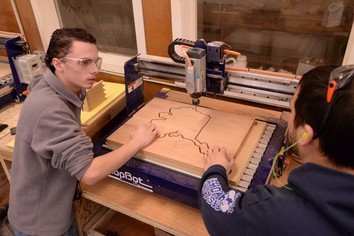
|
Sitka's Design and Fabrication Program has made great strides since we first looked at it back in 2013. School superintendent Mary Wegner talks challenges, partnerships, ACT (Arts, Culture and Technology) standards, and distance collaboration with other districts. For more information, read the entire interview with Mary Wegner about Sitka's Fab Lab. Congratulations, Sitka Schools! You've come a long way!
|
ALASKA ACTE 2015-2016 CTE AWARD WINNERS
The Alaska Association for Career and Technical Education (Alaska ACTE) named the following CTE award winners at its annual awards luncheon on October 21, 2015. Congratulations to our outstanding CTE colleagues!
|
Promising Practice Award
Camron Wyatt, Kenai Pennisula Borough School District Sponsor: Fairbanks Economic Development Corporation Community Contribution Award Kathleen Castle, Alaska Construction Academies Director Hospitality/Tourism Teacher of the Year Penny Schram-Browner, Palmer High School Industrial/Technology Teacher of the Year Justin Aulie, Colony High School Career Guidance Award Wendi Graham, West Valley High School |
Outstanding CTE Administrator of the Year
Erich Kuball, Kuspuk School District Leadership Award Sara Battiest, UAF Interior Alaska Campus New CTE Teacher of the Year Brian "Kelly" Shaw, Hutchison High School Outstanding CTE Teacher of the Year Jerry Million, North Pole High School |
Wrangell CTE Programs Demonstrate Real-World Learning!
Wrangell High School’s welding, marine fabrication, woods, and construction trades classes embody the power of CTE in making school relevant to real life. Instructor Drew Larrabee reports that the classes have partnered with the Wrangell Boat Yard, which provided them space to put up a machine shop at the boat yard. Construction of the machine shop included the entire process, from planning to completion. Local contractors (e.g., electrical) worked with the students, who learned from and made connections with these contractors. Some of the students were able to get into Apprenticeship programs as a result of these connections.
Wrangell has also implemented a 3-D drafting program, thanks to support they received through a 2014 DOLWD CTE grant. The students cut their first 3-D designed boat this year and then assembled it (8 ft. rowing boat). Pictures of the project are posted on the Wrangell Fabrication Facebook Page.
Mr. Larrabee is very willing share his curriculum and program information with other CTE professionals! You may contact him at [email protected] or 907-469-0412.
Wrangell has also implemented a 3-D drafting program, thanks to support they received through a 2014 DOLWD CTE grant. The students cut their first 3-D designed boat this year and then assembled it (8 ft. rowing boat). Pictures of the project are posted on the Wrangell Fabrication Facebook Page.
Mr. Larrabee is very willing share his curriculum and program information with other CTE professionals! You may contact him at [email protected] or 907-469-0412.
During 2014 Kent Winship completed his first full year as term instructor for the University of Alaska Fairbanks Bristol Bay Campus Construction Academy. He brings 35-years of residential and commercial carpentry experience into the classroom and Kent’s enthusiasm for CTE spills over into everything he does as evidenced by the growing numbers of students in the program.
His successful reputation has grown amongst his peers in the Bristol Bay region and Kent is now teaching courses in multiple communities. Last summer he partnered with Dillingham High School to deliver a program allowing students to earn dual credit as they worked toward completion of an occupational endorsement, paving the way for entry level jobs in construction upon completion. Kent’s outreach also extends beyond the Bristol Bay region. At last year’s Alaska Association for Career and Technical Education (ACTE) fall conference he networked with University of Alaska Anchorage Kodiak Campus. They learned their programs are similar and are now collaborating to make improvements.
Kent especially enjoys observing the growth of students, like Max Bennett, who embraced the skills he learned over a summer course and has gone on to use the 3-dimensional scanner and 3d print fetal orca whale bones recovered from the Nushagak River.
His enthusiasm for helping students is extraordinary and creates results. The students not only complete the spring and summer Construction Trades courses with skills that regularly land them good jobs in the field, they also earn an:
At last fall’s Alaska ACTE Professional Development Conference he was recognized for his positive and energetic attitude, and his influence on the lives of many young adults entering the world of work by being awarded the Outstanding New CTE Teacher! Congratulations, Kent, and thank you for allowing us to feature your success story this quarter.
If you are interested in networking with Kent, you can contact him at 907-843-1776 or [email protected]
(Download this entire article in PDF format.)
His successful reputation has grown amongst his peers in the Bristol Bay region and Kent is now teaching courses in multiple communities. Last summer he partnered with Dillingham High School to deliver a program allowing students to earn dual credit as they worked toward completion of an occupational endorsement, paving the way for entry level jobs in construction upon completion. Kent’s outreach also extends beyond the Bristol Bay region. At last year’s Alaska Association for Career and Technical Education (ACTE) fall conference he networked with University of Alaska Anchorage Kodiak Campus. They learned their programs are similar and are now collaborating to make improvements.
Kent especially enjoys observing the growth of students, like Max Bennett, who embraced the skills he learned over a summer course and has gone on to use the 3-dimensional scanner and 3d print fetal orca whale bones recovered from the Nushagak River.
His enthusiasm for helping students is extraordinary and creates results. The students not only complete the spring and summer Construction Trades courses with skills that regularly land them good jobs in the field, they also earn an:
- Occupational Endorsement in Basic Carpentry (15.5 dual high school and college credits)
- Occupational Safety and Health Administration (OSHA) 10-hour card
- National Center for Construction Education and Research (NCCER) Core card
At last fall’s Alaska ACTE Professional Development Conference he was recognized for his positive and energetic attitude, and his influence on the lives of many young adults entering the world of work by being awarded the Outstanding New CTE Teacher! Congratulations, Kent, and thank you for allowing us to feature your success story this quarter.
If you are interested in networking with Kent, you can contact him at 907-843-1776 or [email protected]
(Download this entire article in PDF format.)
Copper River Valley Agri-Science Project gets Boost from CTE Grant
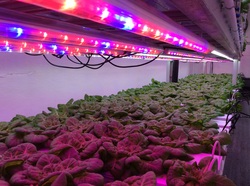 A view of the Controlled Growing unit (CGRO)
A view of the Controlled Growing unit (CGRO)
By Jason Hoke, Executive Director of the Copper Valley Development Association, Inc.
With support from a Department of Labor and Workforce Development Career and Technical Education (CTE) Plan Grant, the Alaska Farm to School Program, and a variety of community partnerships, students of the Copper River School District were instructed in hydroponic growing of vegetables in the CGRO (Controlled Growing) unit, the first of its kind in the state. It is a converted reefer trailer that is heated by a wood boiler system and can grow over 1,000 plants at a time. The students participated in SkillsUSA, one of the Alaska Career Technical Student Organizations (CTSOs) , to learn about nutrients (Calcium Nitrate, 8-16-32 fertilizer), LED lighting, computer programming, hydrology, and horticulture, and eventually sell their lettuce and other veggies. These veggies were grown even at 40 degrees below zero! The students got an AK Grown certification and were able to provide the veggies to local restaurants, stores, community and most importantly the school district. CRSD (Copper River School District) was able to utilize the monies from the State of Alaska Farm to School Program to purchase the leafy veggies to feed the other students and staff healthy food. They harvested approximately 120 heads of lettuce a week and kept the veggies on a growing rotation. Recently, students met with Secretary Vilsack of the USDA to discuss this and other forms of agriculture here in Alaska. Also as a result, several of the students were offered jobs to work over the summer in other hydroponic greenhouses. CTE was hard at work in this collaborative program from Copper Valley Development Association and the CRSD! For more information about this program, contact the Copper Valley Development Association - [email protected] -- or visit their website at www.coppervalley.org.
With support from a Department of Labor and Workforce Development Career and Technical Education (CTE) Plan Grant, the Alaska Farm to School Program, and a variety of community partnerships, students of the Copper River School District were instructed in hydroponic growing of vegetables in the CGRO (Controlled Growing) unit, the first of its kind in the state. It is a converted reefer trailer that is heated by a wood boiler system and can grow over 1,000 plants at a time. The students participated in SkillsUSA, one of the Alaska Career Technical Student Organizations (CTSOs) , to learn about nutrients (Calcium Nitrate, 8-16-32 fertilizer), LED lighting, computer programming, hydrology, and horticulture, and eventually sell their lettuce and other veggies. These veggies were grown even at 40 degrees below zero! The students got an AK Grown certification and were able to provide the veggies to local restaurants, stores, community and most importantly the school district. CRSD (Copper River School District) was able to utilize the monies from the State of Alaska Farm to School Program to purchase the leafy veggies to feed the other students and staff healthy food. They harvested approximately 120 heads of lettuce a week and kept the veggies on a growing rotation. Recently, students met with Secretary Vilsack of the USDA to discuss this and other forms of agriculture here in Alaska. Also as a result, several of the students were offered jobs to work over the summer in other hydroponic greenhouses. CTE was hard at work in this collaborative program from Copper Valley Development Association and the CRSD! For more information about this program, contact the Copper Valley Development Association - [email protected] -- or visit their website at www.coppervalley.org.
Student's Medical Training Helps Fallen Worker
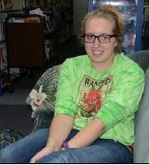
Student’s medical training helps fallen worker
By the Hawk Highlights staff -- Published August 28, 2014
Reprinted here with permission from The Hawk Highlights, Galena, Alaska http://www.hawkhighlights.com/
When a construction worker fell off the Ptarmigan Hall roof on Wednesday evening, the first medical responder on the scene was GILA senior Emmie Ellis. Emmie became a state certified emergency trauma technician in 2013 following her training in GILA’s health sciences program. When the construction worker tumbled 35 feet to the ground after slipping on a rain-slick rooftop, Emmie was meeting with residence hall dean of students Ben Blasco.
“We saw him fall,” she said. After calling 911, she and Mr. Blasco ran outside. “He looked like he had partially fallen onto the concrete.” Emmie’s emergency medical training kicked in. “He was obviously distraught,” Emmie said. The 17-year-old from Delta Junction told the construction worker she was an emergency medical technician, and she asked several questions to check his coherence.
Download the entire story here in PDF - or read it online at http://hawkhighlights.com/news/2014/201409-news/student_medical_aid.html.
By the Hawk Highlights staff -- Published August 28, 2014
Reprinted here with permission from The Hawk Highlights, Galena, Alaska http://www.hawkhighlights.com/
When a construction worker fell off the Ptarmigan Hall roof on Wednesday evening, the first medical responder on the scene was GILA senior Emmie Ellis. Emmie became a state certified emergency trauma technician in 2013 following her training in GILA’s health sciences program. When the construction worker tumbled 35 feet to the ground after slipping on a rain-slick rooftop, Emmie was meeting with residence hall dean of students Ben Blasco.
“We saw him fall,” she said. After calling 911, she and Mr. Blasco ran outside. “He looked like he had partially fallen onto the concrete.” Emmie’s emergency medical training kicked in. “He was obviously distraught,” Emmie said. The 17-year-old from Delta Junction told the construction worker she was an emergency medical technician, and she asked several questions to check his coherence.
Download the entire story here in PDF - or read it online at http://hawkhighlights.com/news/2014/201409-news/student_medical_aid.html.
ALASKA ACTE 2014-2015 CTE AWARD WINNERS
The Alaska Association for Career and Technical Education (Alaska ACTE) named the following CTE award winners at its annual awards luncheon on October 22, 2014. Congratulations to our outstanding CTE colleagues!
|
Outstanding CTE Teacher of the Year
Leesa Wingo, Anchorage School District Outstanding New CTE Teacher Kent Winship, University of Alaska Fairbanks, Bristol Bay Campus Business/Information Technology Teacher of the Year Sharon Ashlock, Fairbanks North Star Borough School District Health Sciences Teacher of the Year Kathleen Foxley, Mat-Su Borough School District Industrial/Technology Teacher of Year (Secondary) Randy Wolfe, Mat-Su Borough School District Industrial/Technology Teacher of Year (Postsecondary) Robin Gilcrist, University of Alaska Southeast |
Career Guidance
Joni Simpson, Fairbanks North Star Borough School District Community Contribution Sean Schubert, Department of Labor and Workforce Development, Anchorage Leadership Gerry Andrews, Andrews Auctions, Appraisals & Professional Services, Anchorage Promising Practices Randy Hughey, Alaska Technical Services, Sitka |
COLLABORATIVE DIGITAL DESIGN AT SHERWOOD AND SITKA HIGH SCHOOLS
Teachers John Niebergall and Randy Hughey, along with students, other teachers, and business partners, talk about the
digital design and fabrication program and the impact it has had on Sitka High students.
digital design and fabrication program and the impact it has had on Sitka High students.
Download this PDF for more background on the program.
Download the brochure for related teacher professional development opportunities.
Download the brochure for related teacher professional development opportunities.
Student Greenhouses Prompt Thorne Bay Restaurant Purchase
From KRBD - Ketchikan FM Community Radio, by Emily Files, September 18, 2014
There are no restaurants in the approximately 500-person town of Thorne Bay on Prince of Wales Island. But that looks like it’s going to change. The Southeast Island School District, which serves Thorne Bay and several other rural schools, is buying a vacant restaurant from the city. They’re going to use food from school greenhouses and a bakery to provide fresh meals for residents and business experience for students. It will be called the Thorne Bay Café.
The Southeast Island School District hired Susan Powell, a restaurant manager from Oregon, to take charge of the café. She listed some of the entree possibilities:
“Carnitas tacos, ‘cause we have the great tortillas from Coffman Cove. Maybe a taco salad, you know, some Mexican things. A barbeque pork sandwich. A Philly cheese steak or chicken cheese steak. A couple different kinds of soup every day ‘cause we’re going into winter.”
She’s still working on the menu. But she plans to use produce from four school greenhouses. And she’ll get bread and tortillas from a small bakery run by the Coffman Cove school.
“I think the main goal is to support the schools and promote their products and to have student involvement,” Powell said.
Megan Fitzpatrick is Thorne Bay’s 7th through 12th grade teacher. She said this restaurant is one more fruit to spring from the labor and success of the student-run greenhouse. The school district starting operating the hydroponic greenhouse in Thorne Bay in February.
To read the entire story, visit this link.
Webmaster's note: The hydroponic greenhouse and the horticulture curriculum were supported by a CTE Plan Implementation grant in FY13 and FY14.
There are no restaurants in the approximately 500-person town of Thorne Bay on Prince of Wales Island. But that looks like it’s going to change. The Southeast Island School District, which serves Thorne Bay and several other rural schools, is buying a vacant restaurant from the city. They’re going to use food from school greenhouses and a bakery to provide fresh meals for residents and business experience for students. It will be called the Thorne Bay Café.
The Southeast Island School District hired Susan Powell, a restaurant manager from Oregon, to take charge of the café. She listed some of the entree possibilities:
“Carnitas tacos, ‘cause we have the great tortillas from Coffman Cove. Maybe a taco salad, you know, some Mexican things. A barbeque pork sandwich. A Philly cheese steak or chicken cheese steak. A couple different kinds of soup every day ‘cause we’re going into winter.”
She’s still working on the menu. But she plans to use produce from four school greenhouses. And she’ll get bread and tortillas from a small bakery run by the Coffman Cove school.
“I think the main goal is to support the schools and promote their products and to have student involvement,” Powell said.
Megan Fitzpatrick is Thorne Bay’s 7th through 12th grade teacher. She said this restaurant is one more fruit to spring from the labor and success of the student-run greenhouse. The school district starting operating the hydroponic greenhouse in Thorne Bay in February.
To read the entire story, visit this link.
Webmaster's note: The hydroponic greenhouse and the horticulture curriculum were supported by a CTE Plan Implementation grant in FY13 and FY14.
DAN DOMKE NAMED SECONDARY CTE ADMINISTRATOR OF THE YEAR BY AWIB
JUNEAU, Alaska—The Alaska Workforce Investment Board has named Daniel Domke the David G. Stone Secondary Vocational Training Administrator of the Year for significantly improving and promoting career and technical education.
Nominations for the prestigious awards come from an Alaska business or industry.
“Career and technical education is a critical component of our Alaska workforce investment system,” AWIB Chair Doug Ward said. “CTE helps prepare students for a continually evolving workplace, giving them a head start on careers, and future education and training.”
Domke is career and technical education director for the Fairbanks North Star Borough School District, but served as principal of Hutchison High School in Fairbanks when AWIB selected him. According to the nomination, Domke is an advocate for CTE programs at the local and state levels who has built relationships that enable dialogue between industry and education. He listens to Alaska industries’ needs for future employees and incorporates the information into curriculum. Domke champions new programs that support Alaska industry, such as a new instruction pathway for heavy
equipment operator. He encourages staff to pursue professional development and provide a learning environment that allows all students to succeed.
Read the Press Release
Nominations for the prestigious awards come from an Alaska business or industry.
“Career and technical education is a critical component of our Alaska workforce investment system,” AWIB Chair Doug Ward said. “CTE helps prepare students for a continually evolving workplace, giving them a head start on careers, and future education and training.”
Domke is career and technical education director for the Fairbanks North Star Borough School District, but served as principal of Hutchison High School in Fairbanks when AWIB selected him. According to the nomination, Domke is an advocate for CTE programs at the local and state levels who has built relationships that enable dialogue between industry and education. He listens to Alaska industries’ needs for future employees and incorporates the information into curriculum. Domke champions new programs that support Alaska industry, such as a new instruction pathway for heavy
equipment operator. He encourages staff to pursue professional development and provide a learning environment that allows all students to succeed.
Read the Press Release
MAT-SU CAREER TECH HIGH STUDENTS CHOSEN FOR NATIONAL COMPETITION
From the Mat-Su Valley Frontiersman, September 9, 2014
By Caitlin Skvorc
WASILLA — Students from Mat-Su Career and Technical High School have put Alaska on the global map with scientific research beyond their years.
Career and Tech students Lucas Arthur, Kailey Carlson, Joshua Hartman and Ariel Hasse were selected with four other teams from across the United States for the Global Learning and Observations to Benefit the Environment (GLOBE) Learning Expedition, a “worldwide hands-on primary and secondary school-based science and education program,” according to the organization’s website.
Read the entire article.
By Caitlin Skvorc
WASILLA — Students from Mat-Su Career and Technical High School have put Alaska on the global map with scientific research beyond their years.
Career and Tech students Lucas Arthur, Kailey Carlson, Joshua Hartman and Ariel Hasse were selected with four other teams from across the United States for the Global Learning and Observations to Benefit the Environment (GLOBE) Learning Expedition, a “worldwide hands-on primary and secondary school-based science and education program,” according to the organization’s website.
Read the entire article.
SITKA LAUNCHES SUCCESSFUL DIGITAL DESIGN AND FABRICATION PROGRAM
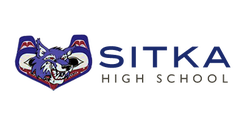
By Randy Hughey, CTE Instructor, Sitka High School
[email protected]
(From the April-May 2013 Alaska Workforce Investment Board newsletter)
As we all know, 21st century manufacturing is an interconnected global activity. A manufacturing team may consist of an assembly facility in Vietnam working with a designer in Boston, a banker in London, and a distribution company in Brazil. The members of this team may never actually meet face to face.
The CTE staff at Sitka High School, through a Department of Labor Alaska Career and Technical Education Plan Implementation Grant, set out to simulate these conditions with Rural Alaskan students and to demonstrate that small, remote schools can participate in manufacturing without having a particularly specialized facility and only modestly trained faculty.
A regular Sitka High classroom was outfitted with a conventional computer lab, 3D design software, a 3D printer, a laser cutter/engraver, and a CNC vinyl cutter. The Design and Fabrication Laboratory quickly became known as the Fab Lab. Teachers from Haines, Mount Edgecumbe, and Sitka High met in Sitka and were trained in the use of Rhino, a slick but inexpensive 3D design software. After the 3 day course these teachers went home and taught their students the basics of Rhino.
Next, students were organized into remote design groups and given a manufacturing problem to solve. One student each from Haines, Sitka, Mount Edgecumbe, and a partner school in Oregon, Sherwood High were formed into teams.
Read the entire article here (PDF).

